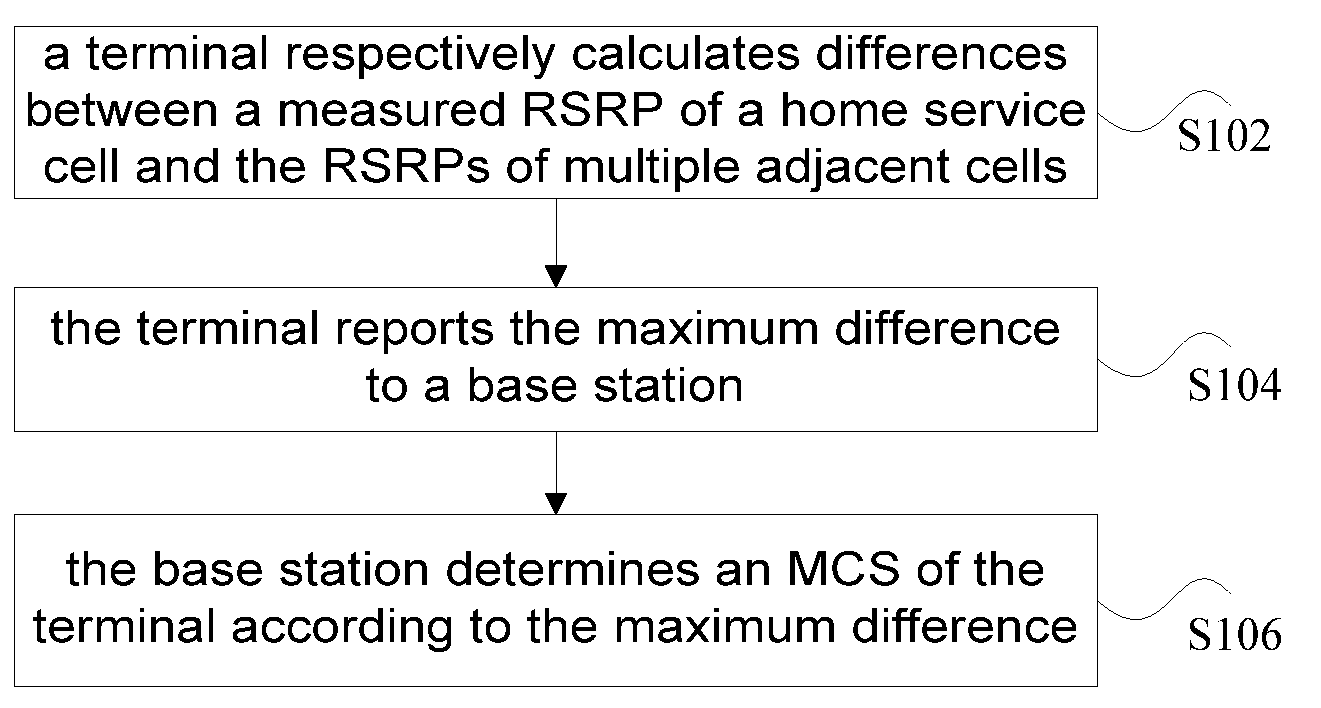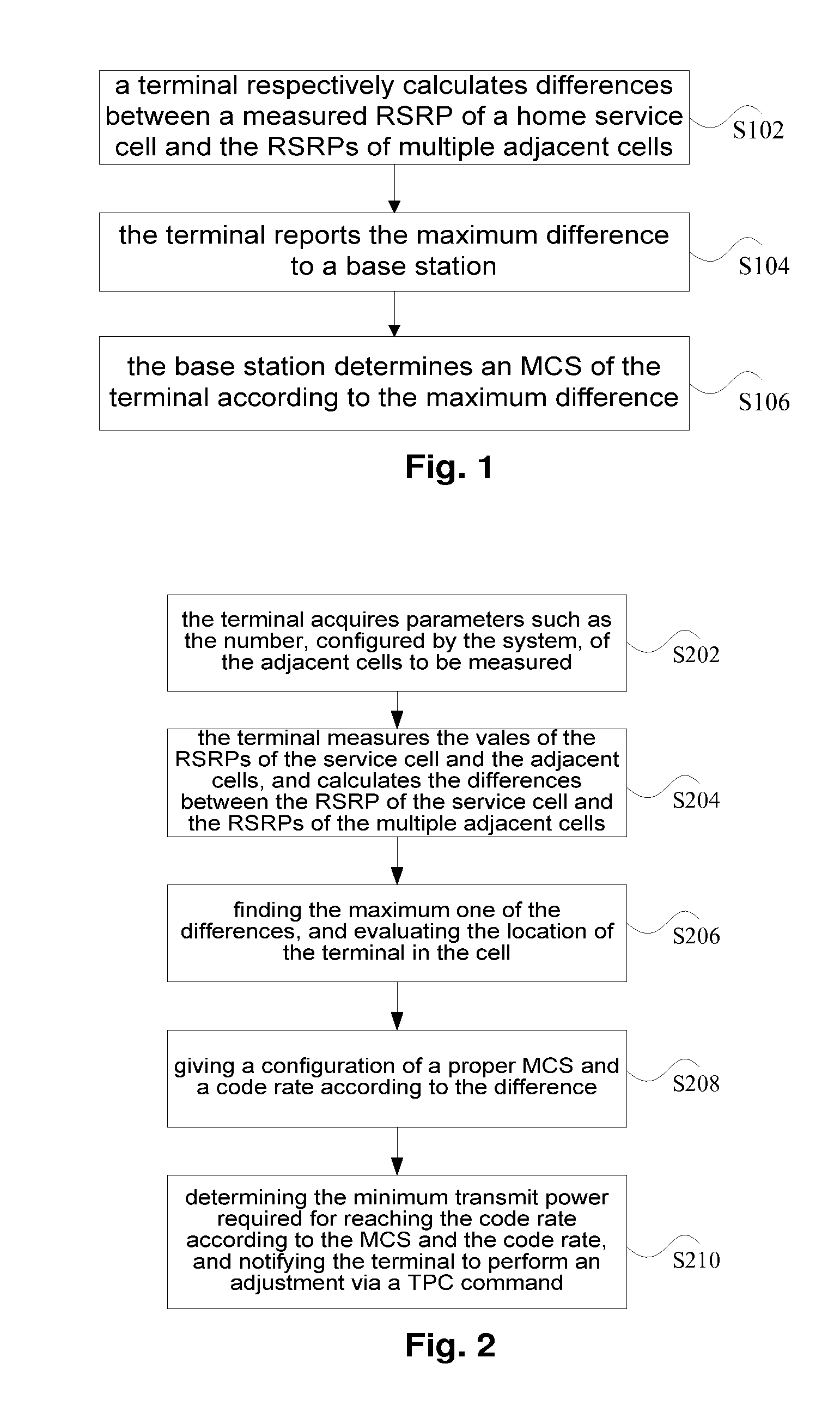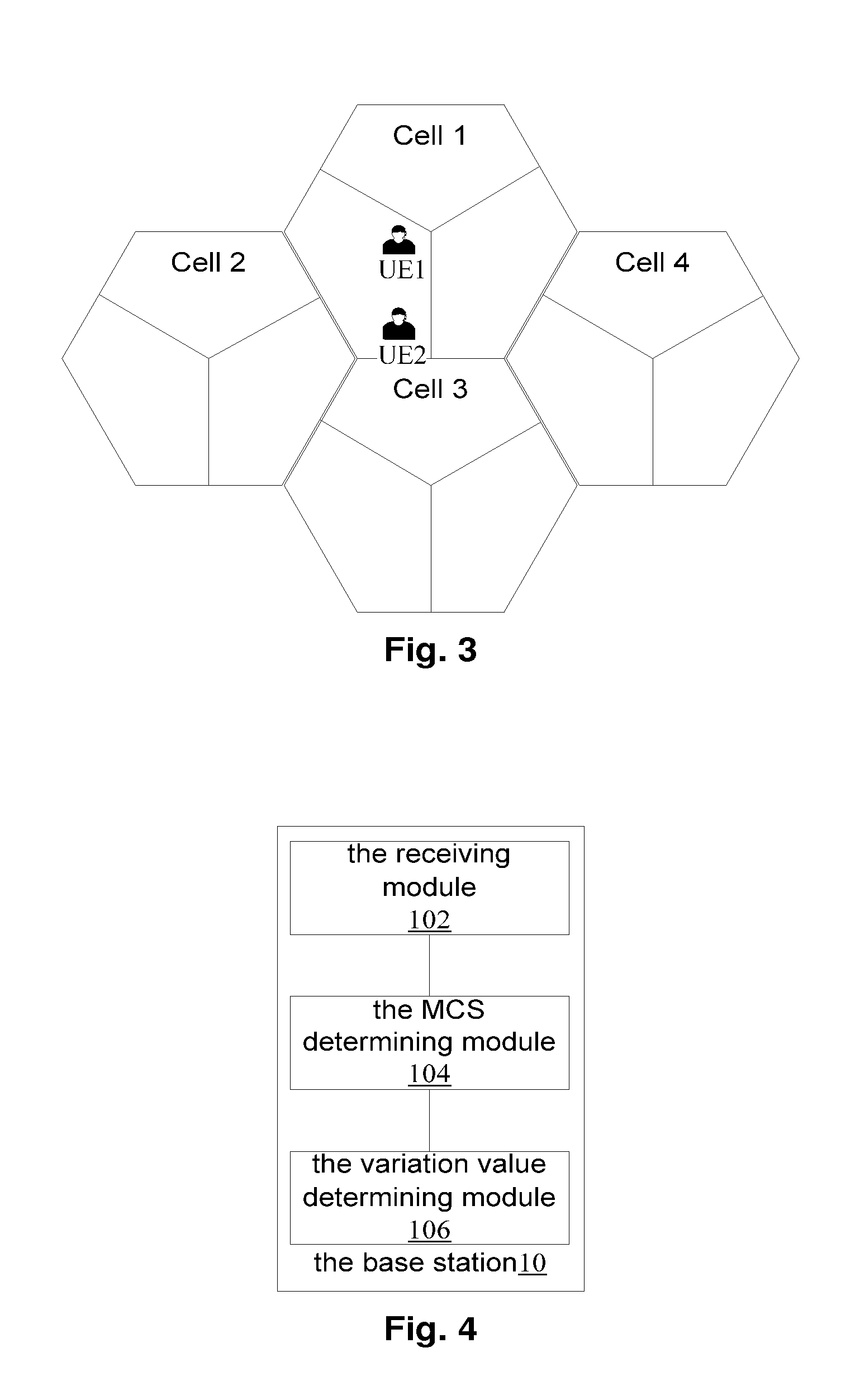Link adaptation method, base station and terminal in LTE system
a technology of long-term evolution and adaptability, applied in the field of communication, to achieve the effect of improving the frequency spectrum efficiency of the system and simplifying the flow of the am
- Summary
- Abstract
- Description
- Claims
- Application Information
AI Technical Summary
Benefits of technology
Problems solved by technology
Method used
Image
Examples
embodiment 1
[0053]As shown in FIG. 2, the specific process flow of a link adaptation method in a LTE system according to an embodiment of the present invention comprises the following steps.
[0054]Step S202, a base station configures the number of adjacent cells to be measured by a UE as n, and the UE acquires the number n.
[0055]Step S204, the UE measures the value of RSRP (recorded as RSRP0) of a service cell and the values of the RSRPs (recorded as RSRP1, RSRP2, . . . RSRPn) of the n adjacent cells, and then the UE respectively calculates differences between RSRP0 and RSRP1, RSRP2, . . . RSRPn, and respectively records them as ΔRSRP1, ΔRSRP2, . . . ΔRSRPn.
[0056]Step S206, the UE selects the maximum one from the multiple differences calculated in the step S204, and records it as ΔRSRPmax, and reports the ΔRSRPmax to the base station (the ΔRSRPmax can be carried in a measurement report to report).
[0057]Step S208, an MCS value corresponding to the ΔRSRPmax and suitable for the location of the UE ...
embodiment 2
[0059]As shown in FIG. 3, there are two UEs in a cell 1, wherein the UEs respectively are a UE1 and a UE2. According to the process manner of the method of the embodiment of the present invention, the two UEs are required to measure the value of the RSRP of a service cell, i.e. the cell 1, and the values of the RSRPs of other three adjacent cells (cell 2, cell 3 and cell 4).
[0060]Since the location of the UE1 is closer to the center of the cell, the maximum RSRP difference between the service cell and the adjacent cells of the UE1 should be greater than that of the UE2. Thus, according to a corresponding simulation curve or a correspondence relation table, an MCS and a code rate that a base station can allocate to UE1 should be greater than those to the UE2. It can be guaranteed that the UE1 with a better channel quality is allocated with an MCS with a higher order to improve data transmission rate, whereas the UE2 with a relatively bad channel quality is allocated with an MCS with ...
embodiment 3
[0061]As shown in FIG. 3, during movement of a UE, since the UE periodically measures the RSRP of the present cell (i.e. a service cell) and the RSRPs of adjacent cells, a base station can dynamically acquire a maximum difference reflecting the location of the UE and can configure an MCS and control a power flexibly.
[0062]FIG. 4 is a schematic diagram of a base station and a terminal according to an embodiment of the present invention. The base station 10 comprises: a receiving module 102, adapted to receive a maximum difference reported by a terminal 20, wherein the maximum difference is the maximum one in the multiple differences which are obtained by the terminal respectively calculating differences between a measured reference signal received power (RSRP) of a home service cell and the RSRPs of multiple adjacent cells; and an MCS determining module 104, adapted to determine a MCS for the terminal 20 according to the maximum difference.
[0063]Preferably, the MCS determining module...
PUM
 Login to View More
Login to View More Abstract
Description
Claims
Application Information
 Login to View More
Login to View More - R&D
- Intellectual Property
- Life Sciences
- Materials
- Tech Scout
- Unparalleled Data Quality
- Higher Quality Content
- 60% Fewer Hallucinations
Browse by: Latest US Patents, China's latest patents, Technical Efficacy Thesaurus, Application Domain, Technology Topic, Popular Technical Reports.
© 2025 PatSnap. All rights reserved.Legal|Privacy policy|Modern Slavery Act Transparency Statement|Sitemap|About US| Contact US: help@patsnap.com



